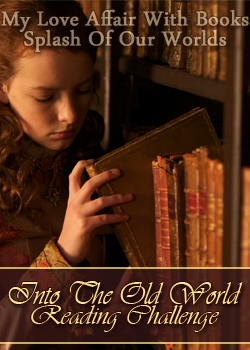The following is a list of book titles with the link on posts where they were featured or reviewed in The Bibliophilic Night Owl.
#
The 5th Wave by Rick Yancey
A
At Risk by Alice Hoffman
B
The Birth of Venus by Sarah Dunant
Black and Blue by Anna Quindlen
The Books of Rachel by Joel Gross
Bridesmaids by Jane Costello
C
The Center of the World by Andreas Steinhöfel
The Crimson Petal and the White by Michel Faber
D
The Divergent Trilogy by Veronica Roth
The Devil Wears Prada by Lauren Weisberger
E
The English Patient by Michael Ondaatje
F
The Flanders Panel by Arturo Pérez-Reverte
The Forest Lover by Susan Vreeland
The Four Temperaments by Yona Zeldis McDonough
Fortune’s Rocks by Anita Shieve
G
Girl in Hyacinth Blue by Susan Vreeland
Girl with the Pearl Earring by Tracy Chevalier
The God of Spring by Arabella Edge
H
Half of a Yellow Sun by Chimamanda Ngozie Adichie
Here on Earth by Alice Hoffman
His Dark Materials Trilogy by Philip Pullman
The Hunger Games by Suzanne Collins
I
The Infinite Sea by Rick Yancey
Inklings (Book 1 of The Oxford Chronicles) by Melanie M. Jeschke
In the Company of the Courtesan by Sarah Dunant
J
K
L
The Lady and the Unicorn by Tracy Chevalier
The Last Report on the Miracles at Little No Horse by Louise Erdrich
Last Voyage of the Valentina by Santa Montefiore
Leonardo's Swans by Karen Essex
The Life Room by Jill Bialosky
The Lost Diary of Don Juan by Douglas Carlton Abrams
The Lost Language by Marianne Villanueva
Love Medicine by Louise Erdrich
M
Marrying Mozart by Stephanie Cowell
The Master Butchers Singing Club by Louise Erdrich
The Maze Runner Trilogy by James Dashner
Me Before You by Jojo Moyes
The Mortal Instruments: City of Ashes by Cassandra Clare
The Mortal Instruments: City of Bones by Cassandra Clare
The Mortal Instruments: City of Fallen Angels by Cassandra Clare
The Mortal Instruments: City of Glass by Cassandra Clare
The Mortal Instruments: City of Heavenly Fire by Cassandra Clare
The Mortal Instruments: City of Lost Souls by Cassandra Clare
N
The Nightingale’s Nest by Sarah Harrison
O
Old Liberty by Marshall Terry
One More Chance by Juan Miguel Sevilla
P
The Painted Kiss by Elizabeth Hickey
The Passion of Artemisia by Susan Vreeland
Pure by Julianna Baggott
The Pursuit of the Well-Beloved and The Well-Beloved by Thomas Hardy
Q
R
The Reading Group by Elizabeth Noble
Revenge Wears Prada by Lauren Weisberger
S
Saving Fish from Drowning by Amy Tan
School for Good and Evil by Soman Chainani
School for Good and Evil: A World Without Princes by Soman Chainani
School for Good and Evil: The Last Ever After by Soman Chainani
The Secret Supper by Javier Sierra
The Serpent in the Garden by Janet Gleeson
The Seville Communion by Arturo Pérez-Reverte
Slayer of Gods by Lynda S. Robinson
Spring Moon by Bette Bao Lord
The Surface of Earth by Reynoids Price
Symphony by Jude Morgan
T
The Time Traveler’s Wife by Audrey Niffenegger
Thirteen Reasons Why by Jay Asher
Tolstoy Lied: A Love Story by Rachel Kadish
Too Great a Lady by Amanda Elyot
Tuxedo Park by Laura Furman
U
Uncommon Faith by Trudy Krishner
The Uncommon Reader by Alan Bennett
V
The Vanishing Point by Louise Hawes
W
The Wayward Muse by Elizabeth Hickey
The Winner Stands Alone by Paulo Coelho
X
Y
The Year of Fog by Michelle Richmond
Z



.png)

